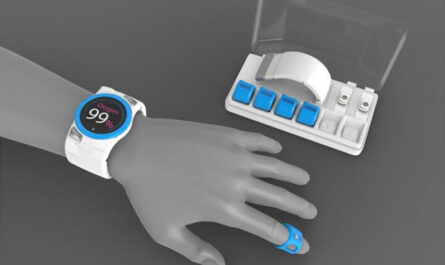
Conjunctivitis, commonly known as eye flu or pink eye, is a very common eye condition that causes redness, swelling and irritation of the membrane (conjunctiva) that lines your eyelids and covers the white part of your eye. The conjunctiva is thin, translucent tissue that covers the eyeball and the inner surface of the eyelids. Conjunctivitis can affect one or both eyes.
Causes
There are different causes that can lead to conjunctivitis including viral, bacterial and allergic infections.
Viral conjunctivitis: Viruses are the most common cause of conjunctivitis, especially during winter and spring seasons. Common viruses that can cause eye flu include adenovirus, enterovirus and influenza viruses. Viral conjunctivitis is highly contagious and spreads easily through direct contact with eye secretions from an infected person or contact with contaminated objects and surfaces.
Bacterial conjunctivitis: Bacteria such as Staphylococcus aureus and Streptococcus pneumoniae can also infect the conjunctiva and cause conjunctivitis. Bacterial conjunctivitis commonly occurs due to inadequate hygiene.
Allergic conjunctivitis: Allergies to certain substances like pollen, animal dander, cosmetic products etc. can cause an immune-mediated response leading to allergic conjunctivitis. Seasonal allergic conjunctivitis is common during spring and fall seasons.
Other risk factors: Certain pre-existing medical conditions like dry eyes, blepharitis (inflammation of eyelids) can increase the risk of developing conjunctivitis through secondary bacterial infections. Trauma to eyes from accidental injuries can allow entrance of infectious agents.
Symptoms
The common symptoms of conjunctivitis include:
– Redness of the white part of the eye or inner lining of eyelids
– Sticky or watery discharge from one or both eyes
– Eyelids stuck together after sleep (more so in viral and allergic conjunctivitis)
– Itchy, watery, irritated or burning sensation in eyes
– Increased tears
– Swelling or puffiness of eyelids
– Sensitivity to light
– Crusty eyelashes after sleep
– Blurred vision
Symptoms may vary depending on the cause but viral conjunctivitis symptoms are usually more severe and include thick white or yellow discharge compared to bacterial conjunctivitis.
Diagnosis
A comprehensive eye exam by an ophthalmologist can help diagnose conjunctivitis. Correct diagnosis is important to determine appropriate treatment. The doctor will:
– Inspect the inner eyelid for redness, swelling, discharge or crusts
– Gently pull down the lower eyelid to examine the whites of the eyes
– Test the reaction of eyes to bright light using an ophthalmoscope
– Collect a sample of discharge for laboratory tests if infection is suspected
Lab tests like Gram stain, culture and sensitivity testing help identify the type of bacteria (if present). Viral conjunctivitis is usually diagnosed based on symptoms and examination alone.
Treatment
Treatment depends on the cause but the goal is always to reduce irritation, relieve symptoms and prevent complications. Some general measures include:
– Warm compresses: Applying a clean warm washcloth over closed eyelids for 5-10 minutes can help soothe inflamed eyes.
– Eye drops/ointments: Over-the-counter artificial tears or antibiotic eye drops may be recommended for bacterial infections. Prescription eye drops containing steroids may be required for severe allergic conjunctivitis.
– Strict hygiene: Wash hands frequently, avoid touching and rubbing eyes, do not share personal items like towels.
– Cold compresses: Applying cool, clean cloth over eyes provides temporary relief from itching and photophobia.
– Oral medications: Antihistamines, decongestants or painkillers may be given for viral or allergic conjunctivitis. Antibiotics are prescribed only if culture confirms bacterial infection.
– Cool mist humidifier: A cool mist humidifier at home helps keep environment moist which prevents dryness of eyes.
Viral conjunctivitis usually clears on its own within 1-3 weeks without treatment. Bacterial cases may require antibiotic eye drops for 5-10 days. Warm compresses and medications provide symptomatic relief until the infection resolves.
Complications
Most cases of conjunctivitis resolve without complications with proper treatment. However, in some cases complications may arise if not managed appropriately which include:
– Corneal ulcers or abrasions: Prolonged irritation and infection can damage the cornea leading to vision impairment if severe.
– Preseptal cellulitis: Bacterial infection spreads from inner eyelid to surrounding tissues causing eyelid swelling. Requires urgent medical care.
– Keratitis: Infection invading the cornea can cause scarring and permanent vision loss if left untreated.
– Blepharitis: Chronic inflammation of eyelid edges causing redness, flaking and crusting.
– Parinaud’s oculoglandular syndrome: A rare complication of infectious conjunctivitis associated with lymphadenopathy.
– Secondary infections: Prolonged viral infection predisposes to secondary bacterial overgrowth complicating conjunctivitis.
Prevention
To prevent spread of contagious conjunctivitis, it is important to follow basic hygiene practices like:
– Wash hands frequently and especially before touching or rubbing eyes
– Avoid direct contact with discharge from infected eyes
– Do not share personal items like towels, tissues, cosmetics etc.
– Practice good handwashing after touching contaminated surfaces
– Use disposable gloves while caring for an infected person
– Clean and disinfect surfaces touched by an infected person
– Stay away from work or school until 24 hours after starting treatment
– Get prompt treatment if symptoms develop
In conclusion, conjunctivitis though painful and irritating is usually a self-limiting condition if managed properly. Correct diagnosis and timely treatment are essential to prevent complications. Following basic hygiene is key to stop further spread in community.
*Note:
1. Source: Coherent Market Insights, Public sources, Desk research
2. We have leveraged AI tools to mine information and compile it



